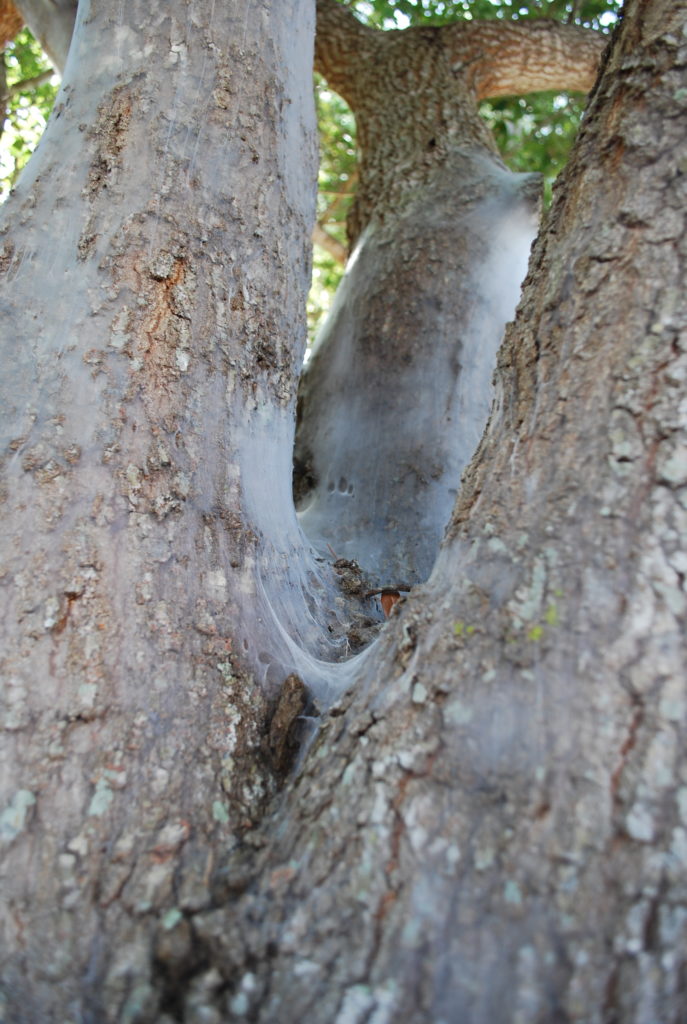Hopping out of the car for a quick trip to the grocery store, I was stopped in my tracks by the sight of one of my favorite things, tree cattle. I had parked under the brutalized tree planted in the small island that provided welcome shade and discovered it was covered with a silvery-white web. Under the web, I knew the insects known as psocids, tree cattle, or bark lice were at work producing Halloween decorations provided by nature.

Tree cattle are a remarkable occurrence; once you see one of the webs, you won’t forget it. Under the Halloween-ish webbing is a “herd” of insects classified in order Psocoptera. There are many species in this group, but the ones who live on trees all have something in common; they are harmless to the plants they live on.
Psocids are found throughout the US, and most species are found on woody plants. These critters are true insects with six legs and go through an incomplete metamorphosis which occurs when the eggs hatch into small insects that then molt through stages, getting larger with each new skin. The adult tree cattle are small, usually less than ¼ inch long, and are often dark-colored, though some are striped or marked with yellow or white. It is the juvenile stages that gather into large herds.
Psocids are the insect equivalent of a cleanup crew; they feed on fungi, algae, lichens, and dead plant and animal debris. No one is really sure if they are genuinely beneficial, but it is known they are not harmful to landscape, garden, or natural area plants.
It is theorized the web is built by tree cattle for protection. When the webs appear, usually in the late summer or fall when the solitary insects come together to create their spectacular webbing. Some gardeners panic thinking the infestation is similar to webworms which are very destructive. However, with a brief inspection, it is pretty easy to tell the difference between tree cattle webs and webworms; the tree cattle webs do not cover the leaves, and webworms do.
All in all, tree cattle are fascinating, often jaw-dropping sights, but no control or intervention is required. Count yourself lucky if you are visited by tree cattle during October, for they supply natural Halloween decorations.
This article first appeared in the Treasure Coast Newspapers.
Leave a Reply